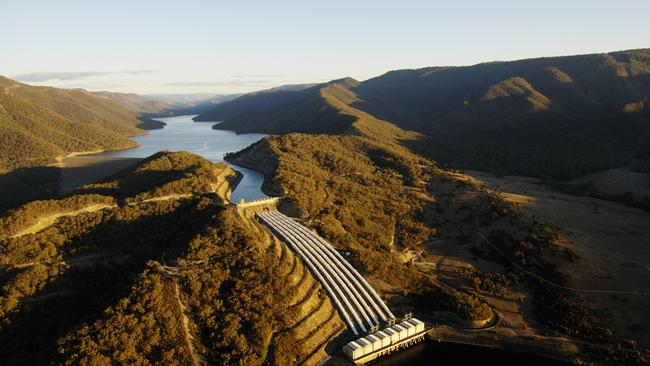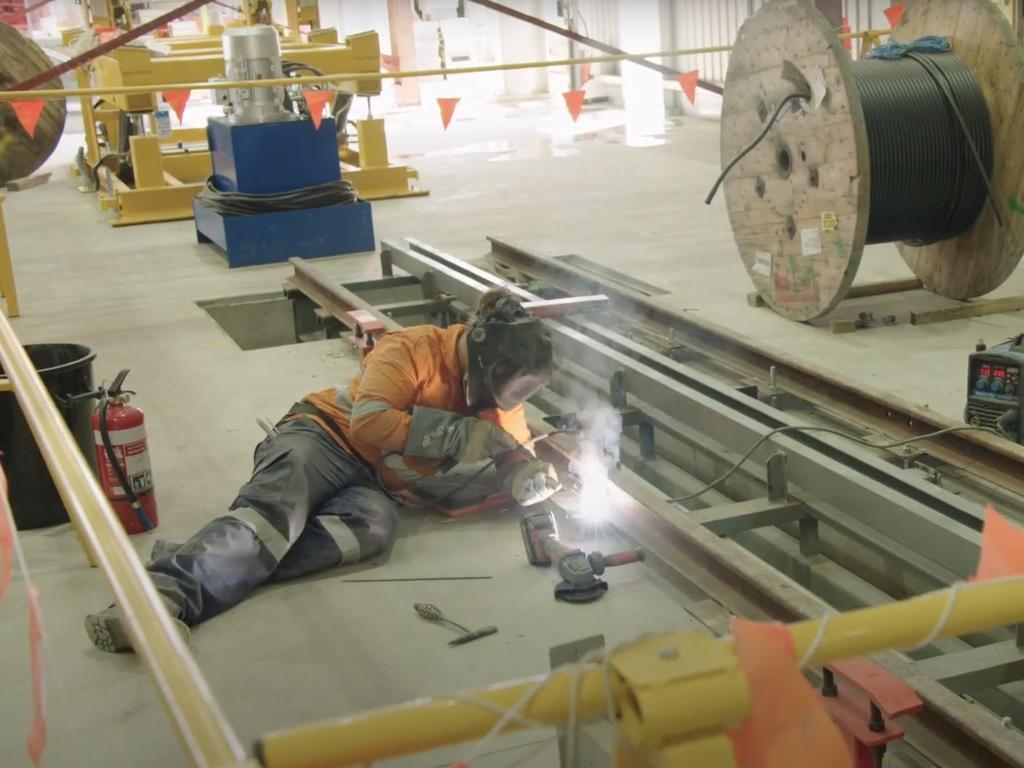Webuild pulls the pin on deal to rescue Clough, sending the contractor into administration
New accounts show the company borrowed $167m from its joint venture partner amid Snowy 2.0 woes.

West Australian contractor Clough has collapsed after a takeover by Italy’s Webuild fell through less than four weeks after a deal was initially struck.
The decision may spark a fresh crisis for the federal government’s Snowy Hydro 2.0 expansion given Clough and Webuild are in a joint venture to build the energy project, and Clough owed its joint venture partner about $88m at the end of June, from a previously undisclosed $167m loan dating back to the 2021 financial year.
Italy’s Webuild stepped in on November 8 to rescue the company in a deal that would have saved one of Australia’s oldest engineering companies from falling into administration.
On Monday, Webuild said the conditional sale would not progress, and it would not offer Clough the $30m loan needed to keep the company afloat.
“On 8 November 2022 Webuild announced the entry into a conditional sale and purchase agreement with Murray & Roberts relating to the acquisition by Webuild of the entire share capital of the Australian company Clough Limited,” it said in a statement.
“Webuild now announces that the parties have jointly determined and agreed that there is no reasonable prospect of that acquisition proceeding through to a successful completion.
“The parties have therefore unconditionally agreed to terminate the SPA with immediate effect.”
Clough’s South African parent, Murray & Roberts, told shareholders on Monday Clough’s directors had called in Deloitte Australia as voluntary administrators as a result of the deal’s collapse.
“In the absence of the interim loan, however, the board of directors of Clough have been left with no choice but to place Clough and its subsidiaries under voluntary administration in Australia with immediate effect,” the company said.
New accounts show Clough borrowed more than $167m from Webuild as its financial woes on the Snowy 2.0 contract deepened, with the company slumping to a $375.3m loss and a $304m working capital deficit for the 12 months to June 30.
Clough has not previously disclosed the $167.7m loan from the joint venture, but its latest accounts show it took the loan in the 2021 financial year, after the pandemic slowed work.
Clough’s latest financial accounts show that almost $88m was still outstanding on the advance from Webuild at June 30.
A spokeswoman for Clough said there had been no previous need to disclose the loan under accounting standards followed by the company.
“The loan information to Salini Clough Joint Venture (Snowy) was recorded in the balance sheet on previous accounts as there was no requirement to itemise related party transactions. Clough is now required to prepare general purpose financial statements that require this type of disclosure,” she said.
The Snowy contract – initially worth $5.1bn – was badly disrupted by the pandemic and the joint venture is believed to still be haggling with Snowy Hydro over claims worth up to $2.2bn.
Financial statements filed with the corporate regulator show the depth of Clough’s financial problems in the lead-up to a November agreement to sell itself to Webuild, with the company bleeding $145m in cash through the financial year and booking a massive financial loss.
In July, Clough chief executive Peter Bennett told staff that the company was debt free and was expected to book earnings of about $35m for the financial year when its accounts were finalised. Mr Bennett told said the company was “debt free” in May, after The Australian first reported that Clough was attempting to find new financing arrangements.
Clough held only $71m in cash in accounts it controlled at June 30, according to financial filings, with another $30.3m held by “joint arrangements”. That is down from Clough-held cash of $198.9m at June 2021, with $47.4m held in joint arrangement.
Clough’s accountants, PwC, noted that the company’s ability to keep operating depended on Webuild successfully acquiring the contractor.
“The group recorded a loss after tax and interest of $375.3m, incurred a net cash outflow from operating activities of $29m for the year ended 30 June 2022 and, as at that date, had a net working capital deficit of $304.8m,” a note from PwC auditors reads.
The accounts show that Clough booked a $48.1m loss before interest, tax, depreciation amortisation and impairments for the year, with its statutory loss blowing out to $375.3m after the company wrote off $268.3m of a $346.9m debt owned by its South African parent company.
Although it has been written down, that debt could also spark the collapse of Murray & Roberts in South Africa, given Clough noted the full amount was still “legally outstanding” in its accounts.
In early November Murray & Roberts blamed Clough’s problems on “margin deterioration” at two of the company’s key contracts, the $420m Waitsia gas project in WA and a $1bn chemicals plant in the US. At the time the South African contractor said Clough would be forced to reverse profits previously declared at the two contracts.
Clough’s financial statements confirm both are now loss-making, with the company stripping $112m in revenue from the two contracts, declaring $18m in “onerous contract” provisions, and writing down $11.4m in goodwill associated with its work on the projects.
“The resulting impact of the above adjusting events are a reduction to profit after tax of $159.1m and net assets of $162.5m, the difference attributable to foreign exchange movements,” say Clough’s accounts.
Know more about this story? Email evansn@theaustralian.com.au




To join the conversation, please log in. Don't have an account? Register
Join the conversation, you are commenting as Logout